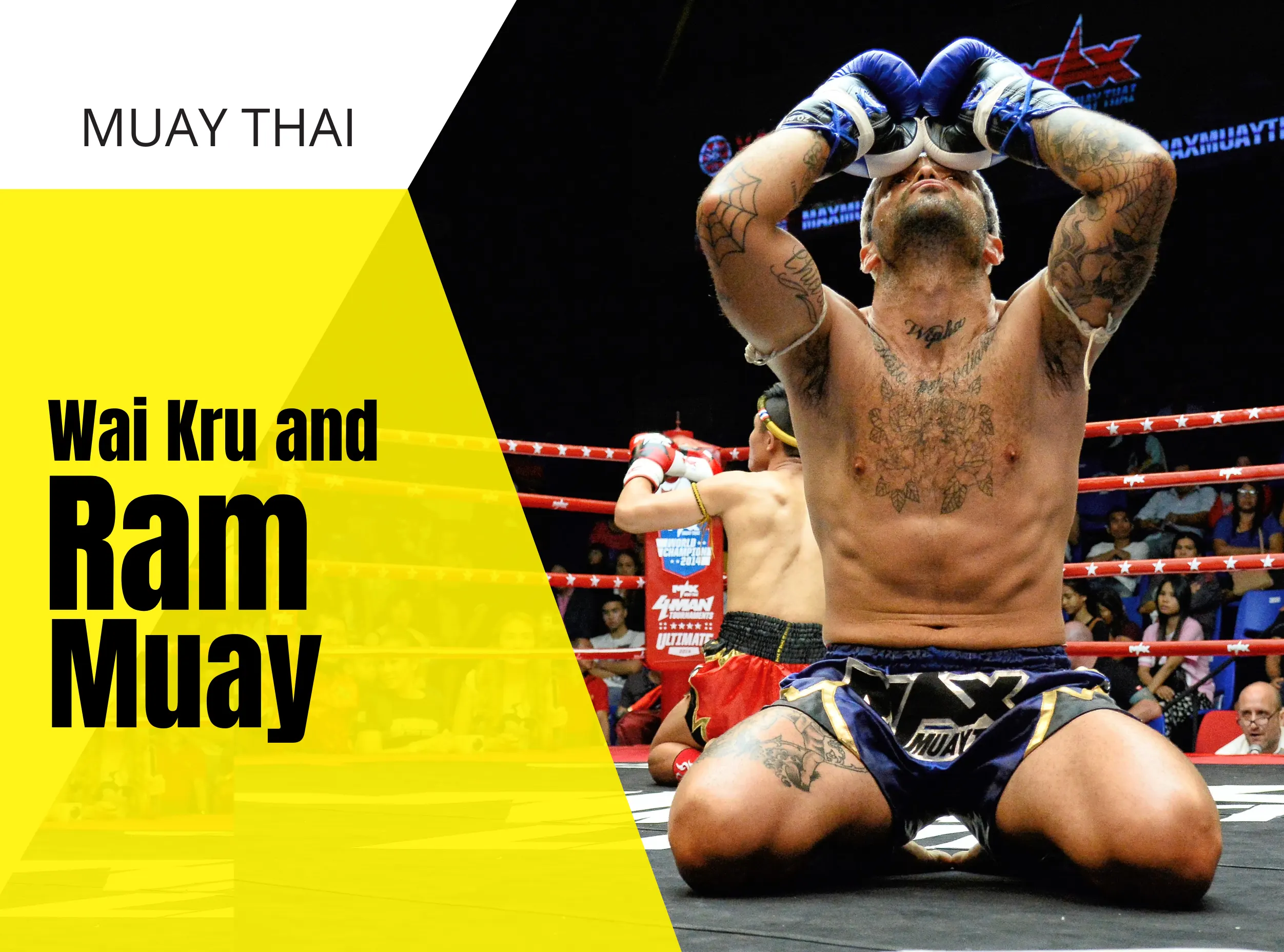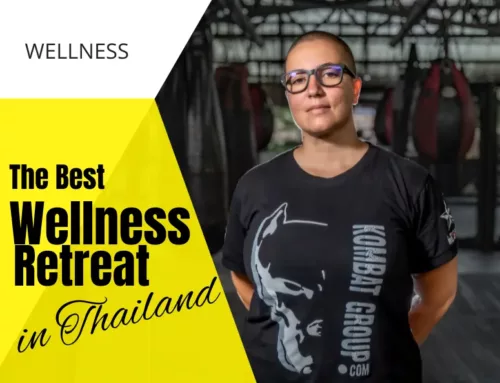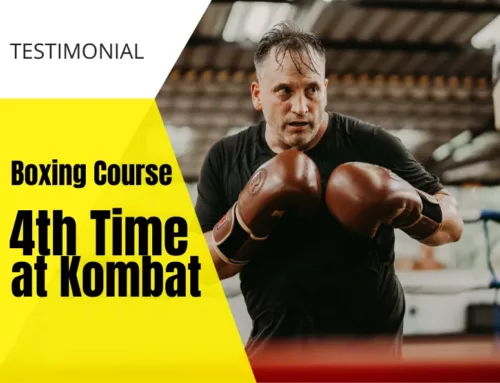If you’ve ever watched a Muay Thai fight in Thailand or even just glimpsed one online, you might have noticed something surprising: before the action begins, the fighters perform a slow, graceful dance in the ring. It’s hypnotic, almost ritualistic, and it seems a world away from the brutal kicks and punches that follow.That pre-fight ritual is called Wai Kru Ram Muay. For beginners stepping into the world of Muay Thai, especially those seeking a transformative solo journey, it’s one of the most beautiful introductions to the sport’s deeper soul.
But what exactly is Wai Kru? Why do fighters perform it? And what can it teach us beyond the ring? Let’s break it down.
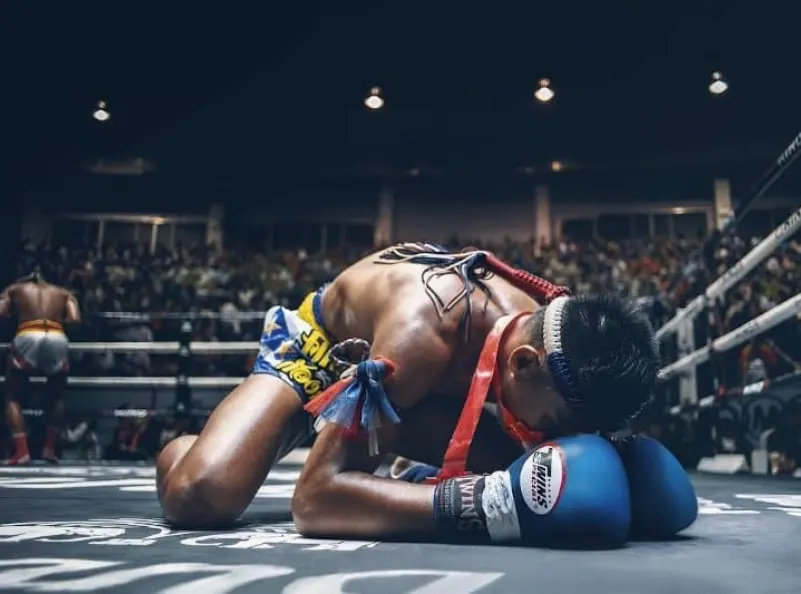
What Is Wai Kru?
Wai Kru translates to “paying respect to the teacher.” In Thai culture, showing gratitude to one’s mentors and elders is deeply rooted, and in Muay Thai, it’s a vital part of the discipline.
This ceremonial act is performed before every official fight, often in front of a roaring crowd, but the purpose remains personal: to honour the fighter’s trainer, gym, family, and lineage. It’s also a moment of mental preparation and spiritual centering, a pause before the storm.
Fighters perform the Wai Kru in the ring by circling it in a specific pattern, often bowing three times to each corner. This represents respect for the trainer, the sport, and the fighter’s homeland. It’s calm, it’s focused, and it’s powerful.
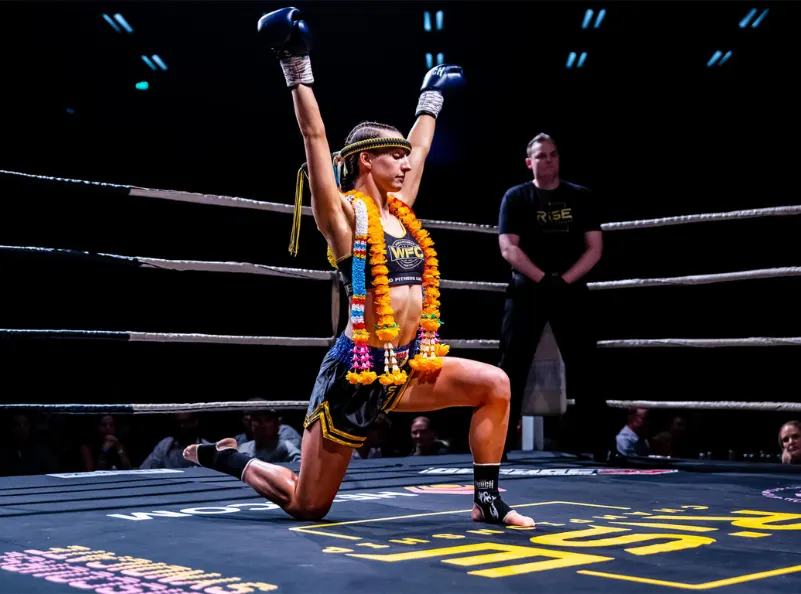
What Is Ram Muay?
Ram Muay follows the Wai Kru and is a more personalized, expressive part of the ritual. It’s like a silent introduction, a way for fighters to show their identity, style, and the lineage they represent.
The Ram Muay varies depending on the gym, the region of Thailand, and the fighter’s personal background. Some movements are inspired by animals like the tiger, monkey, or elephant. Others echo mythical warriors like Hanuman or Garuda, showcasing strength, agility, loyalty, or divine protection.
For beginners, learning even the basics of the Ram Muay can help you feel more connected to the roots of the sport. You realize you’re not just learning how to strike: you’re becoming part of something much older, something sacred.
Combined, Wai Kru Ram Muay becomes a sacred warm-up; a moving meditation that blends discipline, history, and heart.
Why Thai Fighters Perform the Wai Kru
Fighters perform the Wai Kru before every match, often to the rhythm of traditional Thai music. It is not optional. It is a moment to:
- Show respect to their teachers, family, and gym
- Ask for spiritual protection
- Calm their mind and sharpen their focus
- Honor the warriors of the past
The Wai Kru is also performed during the annual March 17 Wai Kru Ceremony in Thailand, a national celebration of Muay Thai culture that coincides with Nai Khanom Tom Day, honoring the legendary Muay Thai fighter considered the “Father of Muay Thai.” For Thai practitioners and foreign students alike, this day is a reminder that Muay Thai it’s a way of life.
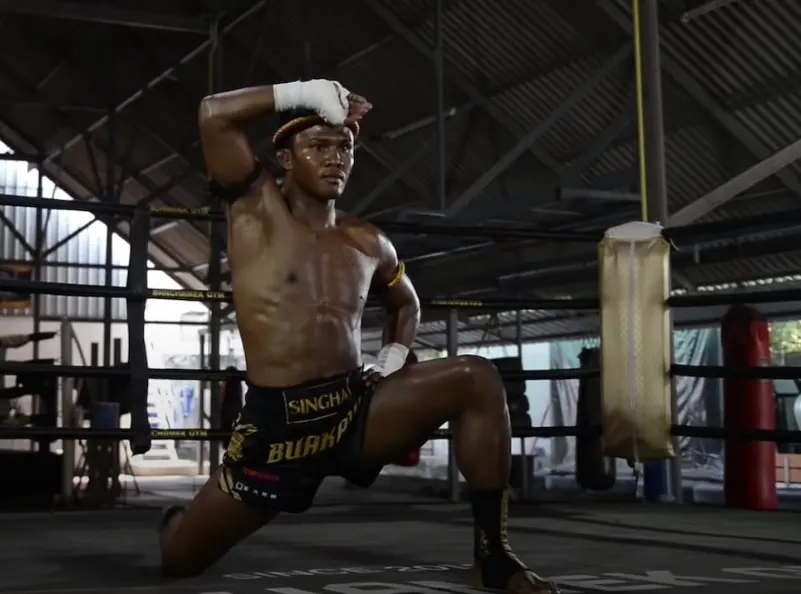
Wai Kru: A Ritual with Structure and Soul
Here’s how the Wai Kru is traditionally performed:
1. Before Entering the Ring
- Fighters kneel in front of the ring, practicing controlled breathing to calm their mind.
- Men step over the top rope; women step under the bottom rope; a gesture of humility and respect.
2. Inside the Ring
- The fighter touches all four corners of the ring, acknowledging the sacred space.
- They walk the perimeter clockwise three times, inspecting the ring and saluting the audience and officials.
3. Kneeling and Performing the Ritual
In the center of the ring, the fighter kneels and performs a threefold bow:
- One for their family
- One for their teacher (Kru)
- One for their spiritual belief
4. Animal and Myth-Inspired Movements
Some of the most common symbolic movements include:
- The Flying Swan – Elegance and grace
- The Tiger – Strength and aggression
- Hanuman Gazes at the Sky – Courage and fearlessness
- Garuda’s Claws – Power and divine protection
Each of these gestures is a tribute to the connection between Muay Thai, nature, and spirituality.
5. The Closing Gesture
The fighter bows one last time toward their opponent and trainer. At that moment, the trainer removes the Mongkol (headband), marking the end of the ceremony and the start of the fight.
What Beginners Can Learn from the Wai Kru
You might wonder: why should I, a beginner, care about this ancient tradition?
Because understanding Wai Kru teaches you more than form. It teaches intention. By embracing this ritual, you:
- Step into Muay Thai with humility rather than ego
- Develop mental discipline alongside physical skill
- Learn to honor the process and those guiding you through it
It’s not just about throwing punches. It’s about learning who you are through each movement, each breath, and each moment of stillness before the storm.
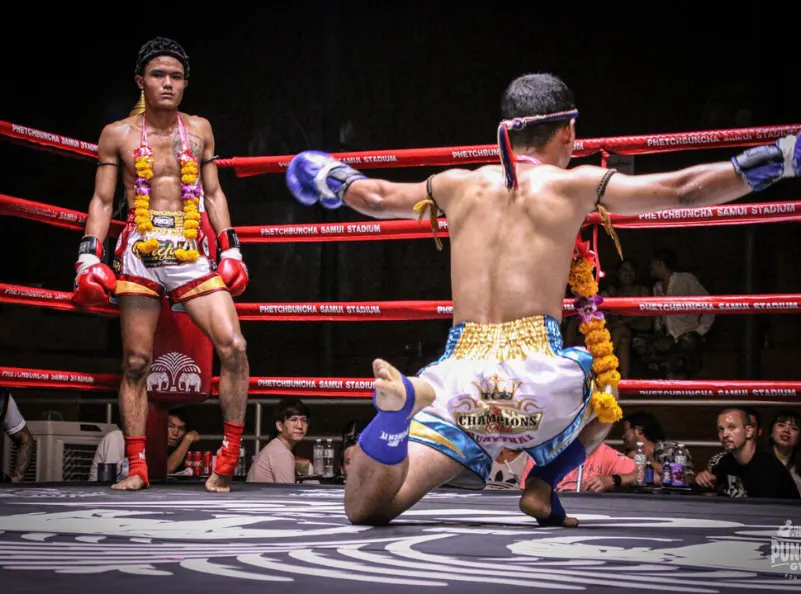
Final Thoughts: More Than a Ritual, It’s A Way of Life
Muay Thai is not just about fighting, it’s about becoming.
As a beginner, you might feel overwhelmed by the techniques, the training intensity, or the unfamiliar customs. But let the Wai Kru guide you. Let it remind you that every fighter starts somewhere and that real strength begins with respect, focus, and an open heart.
If you’re planning to train in Thailand, especially as a solo traveler, embracing the cultural depth of Muay Thai will transform your trip from a simple holiday into a personal journey of growth.
So next time you step into the ring, or even onto the mats for your first class, remember: you’re not just learning how to fight. You’re learning how to move with meaning, honor your teachers, and carry yourself with dignity, both inside and outside the ring.
Ready to Begin?
If you’re curious about Muay Thai and drawn to the idea of solo travel with purpose, consider booking a stay at a Muay Thai camp that values both technique and tradition.
👣 Take the first step. Respect the process. And let the journey shape you.

